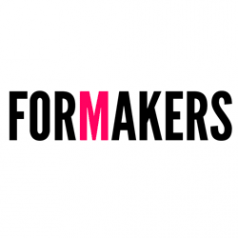10JUL 2014
 © LAVA
LAVA collaborated on the initial concept and layout for the pavilion. The idea was to create a brand experience that united all Philips business groups, from consumer to professional lighting, in one fair stand.
© LAVA
LAVA collaborated on the initial concept and layout for the pavilion. The idea was to create a brand experience that united all Philips business groups, from consumer to professional lighting, in one fair stand.
 © LAVA Visitors followed a carefully orchestrated route instead of navigating a field of separate stands for each of its business sectors.
The ribbon route was wrapped around four elements: an entrance with special light installations, such as light emitting carpets, a light-dome filled with a cloud of light bulbs, a market-arena and a VIP grandstand.
© LAVA Visitors followed a carefully orchestrated route instead of navigating a field of separate stands for each of its business sectors.
The ribbon route was wrapped around four elements: an entrance with special light installations, such as light emitting carpets, a light-dome filled with a cloud of light bulbs, a market-arena and a VIP grandstand.
 © LAVA The elliptical route enabled each lighting sector to tell their own industry-specific stories about light solutions whilst providing visitors with a complete overview of Philips Lighting in one experience.
Two main user groups were identified: visitors who wanted the whole pavilion experience and visitors with one specific destination.
© LAVA The elliptical route enabled each lighting sector to tell their own industry-specific stories about light solutions whilst providing visitors with a complete overview of Philips Lighting in one experience.
Two main user groups were identified: visitors who wanted the whole pavilion experience and visitors with one specific destination.
 © LAVA The resulting different visitor flows potentially created congestion in certain areas.
To analyse this LAVA simulated visitor behaviour with algorithms based on swarm principles, group dynamics and visual perception.
© LAVA The resulting different visitor flows potentially created congestion in certain areas.
To analyse this LAVA simulated visitor behaviour with algorithms based on swarm principles, group dynamics and visual perception.
 © LAVA
Natures’ swarm principles are found in both animal and human group behaviour. In unfamiliar buildings, cities and emergencies, for example, people will follow others but still keep their distance.
© LAVA
Natures’ swarm principles are found in both animal and human group behaviour. In unfamiliar buildings, cities and emergencies, for example, people will follow others but still keep their distance.
 © LAVA Flocks of birds clearly reveal these principles of attraction, repulsion and alignment.
LAVA developed several stand-alone simulations applications based on a combination of custom made and open-source code and algorithms used in for instance the gaming industry.
© LAVA Flocks of birds clearly reveal these principles of attraction, repulsion and alignment.
LAVA developed several stand-alone simulations applications based on a combination of custom made and open-source code and algorithms used in for instance the gaming industry.
 © LAVA
They took it a step further by developing simple-to-handle applications with clear info-graphics for team members without special coding knowledge. A 3D graph was generated in time to highlight different intensities both in geometry and colour during the simulation of two visitor types.
© LAVA
They took it a step further by developing simple-to-handle applications with clear info-graphics for team members without special coding knowledge. A 3D graph was generated in time to highlight different intensities both in geometry and colour during the simulation of two visitor types.
 © LAVA The designers looked at the 3D diagram from different perspectives to understand the consequences of certain design decisions.
LAVA used in-depth research and knowledge of cutting edge technology trends to create an expressive and functional form of architecture.
© LAVA The designers looked at the 3D diagram from different perspectives to understand the consequences of certain design decisions.
LAVA used in-depth research and knowledge of cutting edge technology trends to create an expressive and functional form of architecture.
 © LAVA.
© LAVA.
 © LAVA
© LAVA
 © LAVA
© LAVA
 © LAVA
© LAVA
 © LAVA
© LAVA
 © LAVA
© LAVA
 © LAVA
© LAVA
 © LAVA
© LAVA
 © LAVA
© LAVA
 © LAVA
© LAVA
Philips Light + Building Pavilion / LAVA - Chris Bosse, Tobias Wallisser, Alexander Rieck
Posted in Architecture - Architecture by * FORMAKERS
LAVA used gaming industry algorithms and natures’ swarming principles for the design of a pavilion for Philips. The sculptural pavilion, at the 2014 Light + Building international trade show in Frankfurt, used a ribbon-based routing concept derived from visitor flow simulations. © LAVA
© LAVA © LAVA
© LAVA © LAVA
© LAVA © LAVA
© LAVA © LAVA
© LAVA © LAVA
© LAVA © LAVA
© LAVA © LAVA
© LAVA © LAVA
© LAVA © LAVA
© LAVA
 © LAVA
© LAVA
 © LAVA
© LAVA
 © LAVA
© LAVA
 © LAVA
© LAVA
 © LAVA
© LAVA
 © LAVA
© LAVA
 © LAVA
© LAVA
 © LAVA
© LAVA
Comments
No comments
Sign in »



